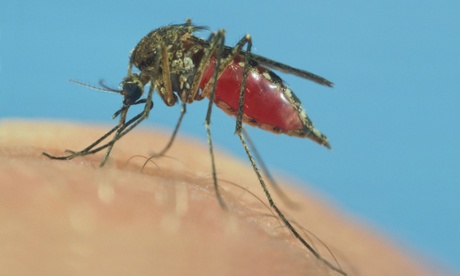
Insecticide-treated school uniforms
Children spend most of the day time at school, which is when dengue vectors are most active. As school uniforms are a cultural norm in most developing countries, Annelies Wilder-Smith of Umeå university developed a project to treat them with the insecticide permethrin. Although yet to be tested under field conditions, past studies have proven that wearing permethrin in clothes can reduce biting rates by up to 90%.
SMS for life
A public-private partnership led by the pharmaceutical company Novartis brings together groups from different sectors to improve access to malaria medicines in developing countries. It uses mobile phones, SMS messaging and electronic mapping technology to track weekly stock levels at thousands of public health facilities in Tanzania, Ghana, Kenya, Cameroon and Democratic Republic of Congo.
Diagnostic test strips for schistosoma
A new device has been developed to test schistosoma infections by detecting parasites in urine. Developed by Govert van Dam at Leiden University, the urine test device is lightweight and more user-friendly than the laboratory equipment used for the previously common Kato-Katz technique, which was a labour intensive method that relied on having trained technicians, reagents, microscopes and waste-management procedures.
Sent in via email from Mark Booth at the Wolfson Research Institute for Health and Wellbeing, Durham University
Vector detector
Students in India have developed a home kit to test malaria, dengue and other vector-borne diseases. The kit, called Janch, has four channels connected with a needle. The channels are filled with different antigens to test different diseases. When a finger is pricked, blood flows into the channels to show the results with 98% accuracy. The product has not been released into the market yet, but is being developed with support from the Xavier School of Management.
Airport importation risk tool
As we travel more, so too do diseases and the insects that spread them. A new interactive website shows the possible routes and risks of vector-borne diseases being spread from endemic areas to airports via flights. The tool pulls data from global disease risk and vector presence maps, air travel records, flight capacity information and global climatic data sets.
Sent in via email from Zhuojie Huang at the Centre for Infectious Disease Dynamics, Pennsylvania State University
Non-toxic chagas vaccine
A new therapeutic vaccine for chagas disease is being developed by Sabin Vaccine Institute, the Texas Children’s Hospital Centre for Vaccine Development and a consortium of Mexican institutions. The vaccine can be used to either replace existing medicines which are highly toxic or have limited effectiveness, or together with the medicines to reduce treatment length or toxicity. It can be administered by injection to both children and adults.
Send in via email by Peter Hotez, president of Sabin Vaccine Institute

